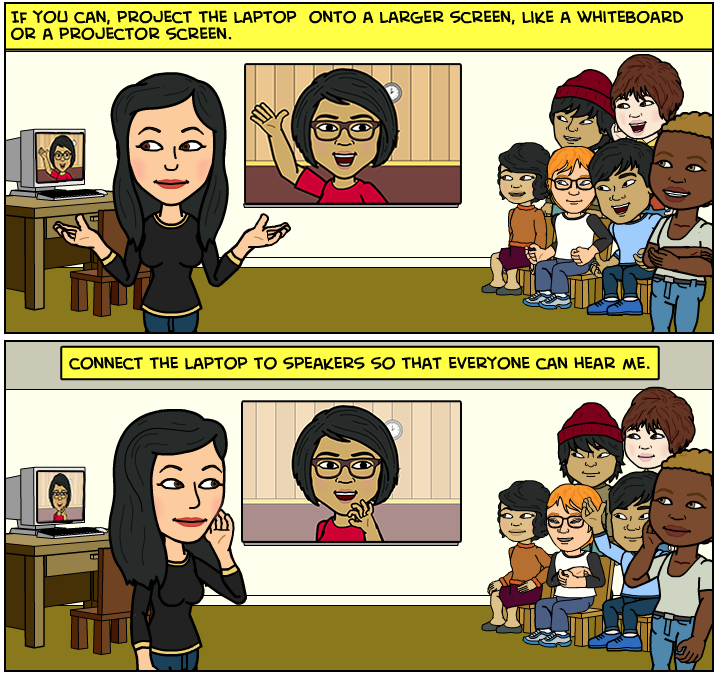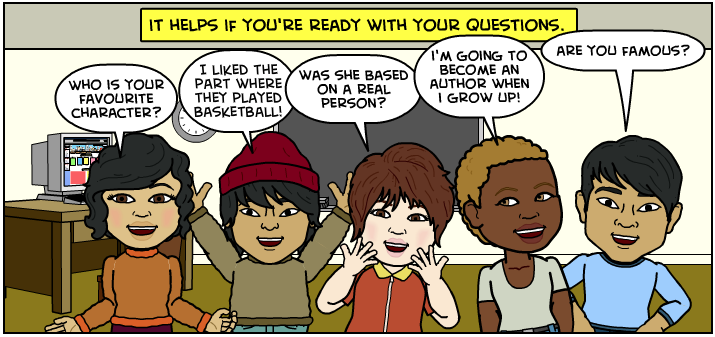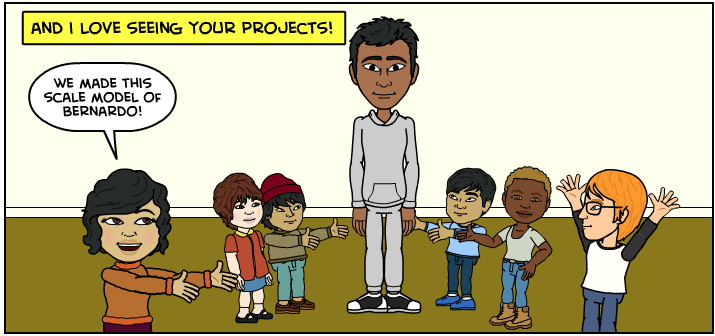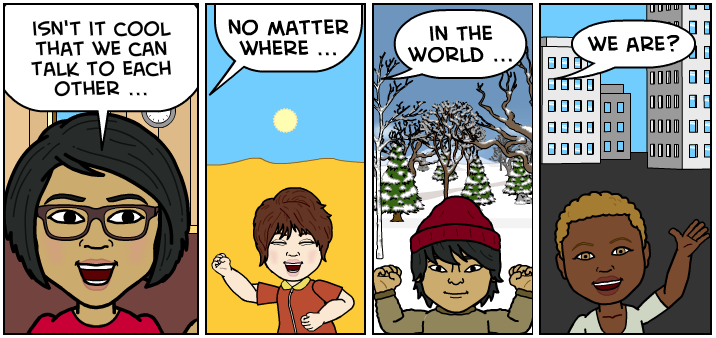By Candy Gourlay
I've just returned from a weekend in Bath attending the New Visions Conference (organised by CWIG - the Children's Writers and Illustrators Group of the Society of Authors). The title said it all. This was a conference about the future. [Read my post about keynote Francesca Simon here and the SOA storified the hashtag here]
FUTURE SHOCK
 To be clear: Christopher warned on the outset that the future would be impossible to predict. He could only surmise "a range of futures", a menu of possibility that may or may not happen.
To be clear: Christopher warned on the outset that the future would be impossible to predict. He could only surmise "a range of futures", a menu of possibility that may or may not happen.
It's all about looking at the "things that go on in the world" and speculating on how these will create change.
Chris told the story of a conversation he had with someone working at the Boots Photolab in the 1990s. He asked how the lab thought the new fangled digital cameras were going to affect their photo processing business. "No impact," was the blithe reply. We all know what happened next.
Still. It's not easy to stare into that crystal ball. The "things that go on" in our world of children's books are still in ferment.
Indeed according to the conference's very excellent Picture Book Panel there has been some fightback.
EVER MORE BEAUTIFUL PICTURE BOOKS ... AND APPS
Picture book panel. It was called 'More than this: the bigger picture' and featured from left to right: Martin Salisbury, head of the MA Children's Book Illustration programme at the Cambridge School of Art; Elizabeth Roy, seasoned Hodder editor turned literary agent; and Louise Bolongaro,former editorial director at Puffin now head of picture books and non-fiction at independent publisher Nosy Crow. The panel was chaired by Dawn Finch, author and VP of the librarian body CILIP .
Dawn Finch, swapping her author hat for her librarian hat, said: "Is it all going to be about apps? There will always be a need for the printed form in school libraries. Douglas Adams said 'Nothing on earth is better at being a shark than a shark' ... and nothing is better at being a book than a book."
"With developments in publishing, the picture book has had to work harder," explained Martin Salisbury. "Books are becoming more beautiful, more tactile."
'The picture book has to work harder.'
The ephemerality of digital means the book as object has increased desirability - and what is more desirable than a gorgeous picture book?
Elizabeth Roy remembers falling out of love with picture books when digital illustration first emerged. "They lacked personality and warmth," she said. "But to be fair illustrators were still experimenting. Now ... we've gone back to seeing picture books as works of art in their own right and we are producing works of beauty and imagination."
Roy added: "The crux of a picture book's purpose is the power of the story - the value we attach to a story can be lost in a tablet."
"We don't squash books into screens!" was the response of Louise Bolongaro, speaking for Nosy Crow, which has made its mark as much with award winning apps as bestselling children's fiction. "It's not all bad!"
Bolongaro - who in her bio called picture books "her one true love"- said apps are not books but another way for children to engage in story. A story app is more like "making of a film than anything else" with a non-linear process -- it's a collaborative work rather than the work of a single creator.
By the looks of Bolongaro's statistics, the screen is here to stay.
97 per cent of five to fifteen year olds have access to internet connected devices and 52.4 per cent prefer reading using electronic devices.
The point was: apps are not about adding bells and whistles to books - they're a new reading experience in their own right.
THE CHALLENGE OF DISCOVERABILITY
The Oxygen of Publicity. A panel on promotion - left to right: Julia Eccleshare, children's book editor at the Guardian; Harriet Bayly, PR and communications manager at Oxford University Press; Catherine Alport, publicity manager at Macmillan Children's Books.
In this brave new world it is not just the industry and the medium that is changing but the readers themselves. Readers want more from the book world. They want to read the books, yes. But they also want to engage with the authors through the many social channels available to them.
Publicists Harriet Bayly and Catherine Alport agreed that events were the key to a publicity campaign and discussed timing, courage, diversity and impact. 'The world has really changed ... publishers expect you to have a gamut of skills,' Harriet said. 'But has the world changed? Remember that Charles Dickens had to promote his books.'
'Even Charles Dickens had to promote his books.'
THE OXYGEN PANEL'S TOP TIPS ON SELF PROMOTION
1. Make sure you're comfortable with how you decide to deliver your events.
2. Be prepared. Plan it, practice it.
3. Don't worry if it doesn't go right the first time.
4. Make sure you communicate well with everyone involved - booksellers and schools. Tell them honestly what you are prepared to do
5. Think local, go global. Local libraries, local festivals, regional awards.
6. Make yourself accessible through social media.
7. Talk to your publicity team. Work with your publisher.
8. Build a community
Julia Eccleshare recalled her start as children's book editor of the Times Literary Supplement which annually had four supplements devoted to children's books. Today, as children's book editor at The Guardian, she has 600 words a week in the Saturday Guardian - which "reflects the relative attention given to children's books" in today's media.
Today's authors struggle to get a review in national periodicals. Julia, tasked with commissioning one review a week for an industry that produces 10,000 books a year, says publishers desperate for reviews have become more and more creative ... "they can be annoying" (no more glitter please!).
This leaves Julia with a conundrum: is it her job to highlight deserving books that will otherwise have no visibility in the media at all? Or is it her job to cover the books that are newsmakers anyway - the ones that will appear on Front Row and other broadsheets?
Perhaps a bit of both?
COMICS: NOT JUST WORDS AND PICTURES
At conferences, the parallel sessions always present a conundrum and this one was particularly acute. I had to choose between a session with Shoo Rayner on how he became a YouTube star, publisher Janetta Otter Barry in conversation with the twinkling John Dougherty, and comics.
What goes in the speech balloons? A panel on how words work with images in comics. John Aggs, Emma Vieceli, Cavan Scott, Paul Duffield. Chaired by Patrice Aggs
 |
| Patrice |
I went to the comics session - which was very bouncy, the screen above the panel's heads whizzing with image after image.
The panel began by declaring that comics were here to stay and then raced on with the task of explaining how to write them. I wanted to ask, 'Are they really here to stay? How did it happen? When?' But that was not the topic of the panel of course.
Despite the great influence the new digital reality has had on the creation of comics, I was struck by the thought that here (like picture books) was one more 2D way into story that is on the rise.
(I've helpfully digested the panel's learning points below)
POINTERS FOR COMICS WRITERS
1. A graphic novel is not a novel with pictures or a film with dialogue. The comic camera does not move eg. a character in a comic cannot roll his eyes
2. Remember that the artist has to interpret what you're saying so think in Action Points.
3. Do not carry all the plot with words
4. Comics is about pacing. Your reader will read faster or slower depending on how you plan your panels. Eg. Beano comics move quickly with small panels. Some graphic novels have big splashes every few pages. The larger the panel, the longer you look at it.
5. Ask yourself: What is the point of this comic panel?
6. Think of what has to be drawn. Eg. "Don't say: '10,000 soldiers swept over the hill' ... that will take weeks to draw!"
7. Think about page turns - if you have big moments and reveals, make sure they appear at a page turn. Don't allow them to land on the right hand page.
One of the discussions that emerged from the comics panel was the idea of visual literacy and comics literacy. Despite the range, sophistication and diversity of comics in the market today, there are still plenty of adults who see pictures and comics as bad for you. (I speak from bitter experience, as a 12 year old I went home one day to find that my mum had made a bonfire of my comics collection).
One of the images shown by the panel. Read the whole comic here ... and you might also be interested in this humongous and excellent piece about visual literacy and comics - Comics and the Value of Language by Paul Duffield. Well worth reading.
Was the current popularity of comics a sign of change? Does the future hold a greater respect for images as a way into literacy?
THE RISE OF UKYA
I have to admit that the panel title The rise and rise of UKYA - Proper Phenomenon or Flash in the Pan? worried me a bit. I've attended so many panels on YA and after a while these panels all sound alike. But I was wrong - this one (chaired by author Lucy Coats) was fascinating.
Do readers even know that they are reading YA?
"We are all talking about it from a book-engaged place," said Ruth Knowles, editorial director for Penguin Random House. The children's book world blithely use the marketing term - meaning 'Young Adult' - but there are plenty of readers who do not know what it means.
Indeed, teen author James Dawson declared that the panel title was wrong, period. All the rising has had been done in the US where YA sales are going through the roof. "I don't think that there has been a rise and rise of UKYA. We haven't had a break-out UKYA title. We are still waiting."
'We haven't had a break-out UKYA title. We are still waiting.'
Even so in the UK, YA sales are fifty per cent up, according to Charlotte Eyre, children's book correspondent of the Bookseller. "It is the fastest growing area of publishing."
What is UKYA anyway?
James' definition made me laugh: "It's like American YA without the soft focus - we are writing for UK teenagers about life the way we know it without the vaseline smeared lens of American young adult books."
Literary agent Carol Walsh made the point that the label gave the unintended signal that the genre was YA "for UK readers only" when UKYA can be read by the world.
Success is tough when the author lives across the Atlantic. Publishers here are unlikely to budget for a trans-American book tour.
While UKYA is still an unknown continent to US readers, readers in the UK have wholeheartedly turned American YA into bestselling franchises.
"Culturally, contemporary UK teenagers are used to American culture," says Julia Green, author and course director of the acclaimed Bath Spa MA in Writing for Young People. "They are saturated in American culture ... it is easier for things to cross from the US than the other way."
And then there's the vexed question of who is reading YA. According to Ruth Knowles, sixty five per cent of YA is read by 19 to 23 year olds. British booksellers are only just beginning to shelf YA separately from the baby board books and middle grade series. According to the panel, in America, YA moved out of the kiddy department a long time ago.
TOMORROW AND TOMORROW AND TOMORROW
At the end of his fascinating talk, the futurist Chris Barnatt showed us this slide:
Chris says the current industry model of author > publisher > distributor >retailer > reader will be upended by the above model - the absence of publisher and agent in his model had some people spluttering in the audience.
And yet, and yet. At the conference, I bumped into an award-winning author friend who's been self publishing these past few years. When asked how things were going, she said she was giving up self publishing because of the stigma. Sales, prizes, discovery was impossible and she had had enough. She was returning to traditional publishing.
While self published books have boomed in some sectors, there are few examples of success in the markets for younger readers.
The absence of publisher and agent in the model had some people spluttering in the audience
Chris said in the future, discoverability will somehow be transformed, speculating that it will be a model similar to SEO -- Search Engine Optimisation -- the search strategies, tools and algorithms that make it possible for us to easily find anything on internet browsers.
Discoverability is something we authors understand - with ten thousand books being published in the UK every year, everyone's looking for the silver bullet that would get your book found by readers.
A relevant aside: I got tweeted by @_Artifact recently, an app firm that had used my novel as an example of its Artifact App - their motto: "Find books by Artifact rather than by accident" - if it works, is this the answer to our book search needs? Perhaps it's the beginning of the answer? You can check out their website: Unbound Concepts.
During the publicity panel, Julia Eccleshare talked about how she saw the window of book discovery shrink in her long career as a journalist. In the olden days, it took ten years for a book to reach its young audience via a long chain of adult gatekeepers. Today, books get to the public fast. Success and failure are decided within months instead of years.
"Today, you the author are at the heart of the selling picture," Julia told the conference. "It is the author who has to make the connection with the reader."
After dinner that night, we were treated to His Dark Materials author Philip Pullman in conversation with Daniel Hahn, chair of the Society of Authors and author of The Oxford Companion to Children's Literature.
It was an inspiring session. But Pullman's advice to us authors was very simple.
How do you make a future in this business?
You need three things, he said: hard work, talent and luck.






















































